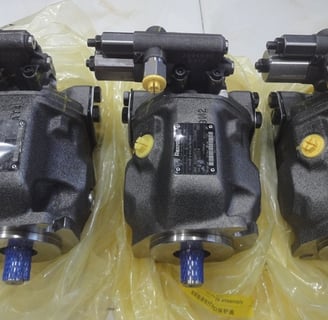Selection Guide for Rexroth-Type Piston Pumps: How to Choose the Most Suitable Model?
10/23/20241 دقيقة قراءة


Understanding Rexroth-Type Piston Pumps
Rexroth-type piston pumps are known for their efficiency and reliability in hydraulic systems. Before diving into the selection process, it’s crucial to have a foundational understanding of these pumps. They operate on the principle of positive displacement, delivering a steady flow of hydraulic fluid. Engineers and technicians prefer Rexroth pumps as they cater to high-performance applications. Their design facilitates varying pressures and flow rates, making them versatile for different industry needs.
Factors to Consider When Choosing a Rexroth Piston Pump
Several factors come into play when selecting the right Rexroth-type piston pump for your application. Firstly, assess the required flow rate. Flow rate, measured in liters per minute (L/min), will dictate the pump size and its motor requirements. Next, consider the pressure ratings. Rexroth pumps come with varying pressure limits, so it’s crucial to match the pump’s capabilities with your application's demands. Furthermore, the pump's physical dimensions, compatibility with existing hydraulic systems, and the environmental conditions it will operate in should also be evaluated.
Evaluating Performance and Maintenance Requirements
Performance specifications are essential when selecting a Rexroth piston pump. Look for energy efficiency ratings, as these can significantly affect operational costs over time. Additionally, consider the maintenance requirements of the pump. Some models may offer ease of accessibility for servicing, while others may be more complex. Selecting a model that balances performance with manageable upkeep will contribute to the longevity and effectiveness of the hydraulic system. Finally, always refer to manufacturer specifications and guidelines for the best practices in handling and maintaining these pumps.
